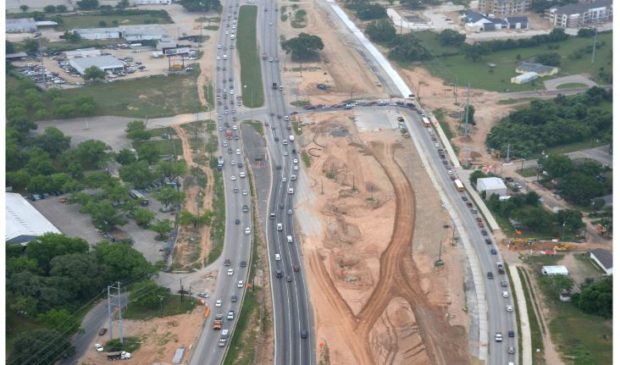Over 60 roadway improvements require relocation of water and wastewater lines
Monday, December 16, 2019 by
Katherine Corley At the Dec. 11 meeting of the Water and Wastewater Commission, Austin Water presented an update on the 65 active transportation improvement projects that necessitate the repositioning of water utility lines. Of those projects, 56 percent are in the planning period, 22 percent are in the design stage, 17 percent are in construction, and 5 percent are still in the bid phase.
“I am really blown away by the amount of work that is here,” said William Moriarty, chair of the commission. “This is a lot more of this stuff than you normally do.”
Under Moriarty’s questioning, the Austin Water team estimated that it is doing approximately double the work now that it was doing five years ago, but with the same five-man team as before.
“Do you all have enough resources to take care of all this?” Moriarty asked. “I appreciate the hard work that you must be doing to keep this all together.”
Bill Stauber, the utility’s interim assistant director of engineering services, assured Moriarty that his team had it under control.
“You’re not wrong for the question and the concern, but I would say that we’ve got a great staff that’s got a lot of good experience,” Stauber said. He added that he was monitoring the situation and would consider hiring some temporary staff if necessary.
Kevin Koeller, managing engineer at Austin Water, explained that the utility is currently partnering with six different transportation agencies or municipalities that need utility alterations, including the Texas Department of Transportation, Central Texas Regional Mobility Authority, Travis County, Williamson County, the city of Austin and Capital Metropolitan Transportation Authority.
“It’s a lot of projects,” Koeller said. “The team works very hard to keep on top of all the growth and all the work that the agencies are doing in widening roadways.”
The process starts when a transportation agency identifies a roadway it would like to enlarge and develops a detailed schematic to identify the needed amount of right of way (land owned and/or controlled by the city that typically includes the street surface, sidewalks and grassy areas outside property lines). The right of way can house a variety of utilities – water, gas, and telecommunications – or utilities can be located in private easements outside of the right of way, according to Koeller.
After the roadway schematic is developed, Austin Water works with the agency to determine which water and wastewater lines will need to be relocated.
“It’s really critical to identify where those utilities are and to locate and identify where conflicts are,” Koeller said. “That can be challenging on some of our older utilities, as our records are not as detailed as a lot of times they should be.”
Koeller noted that Austin Water must follow the agency’s timelines for the roadway widening process, “so that does put a lot of pressure and time deadlines on making some of these things happen.”
One significant project in the construction phase is the enlargement of U.S. Highway 183 South, which affects 93,000 linear feet of water lines and 17,700 linear feet of wastewater lines.
The construction on another major project, the improvement of Oak Hill Parkway – which includes U.S. Highway 290 from William Cannon to Circle Drive and Highway 71 West from the Oak Hill “Y” to Silvermine Drive – is anticipated to start in late 2020 once an agreement has been negotiated. Koeller said Austin Water has identified over 79,000 linear feet of water lines and nearly 28,000 linear feet of wastewater lines that will need to be relocated.
Additionally, a three-phase project to improve Interstate 35 will likely begin construction in 2022.
“This is an incredible amount of work … and you’re doing this with five people,” Moriarty marveled.
Photo of 183 South construction courtesy of TxDOT.
The Austin Monitor’s work is made possible by donations from the community. Though our reporting covers donors from time to time, we are careful to keep business and editorial efforts separate while maintaining transparency. A complete list of donors is available here, and our code of ethics is explained here.
You're a community leader
And we’re honored you look to us for serious, in-depth news. You know a strong community needs local and dedicated watchdog reporting. We’re here for you and that won’t change. Now will you take the powerful next step and support our nonprofit news organization?



